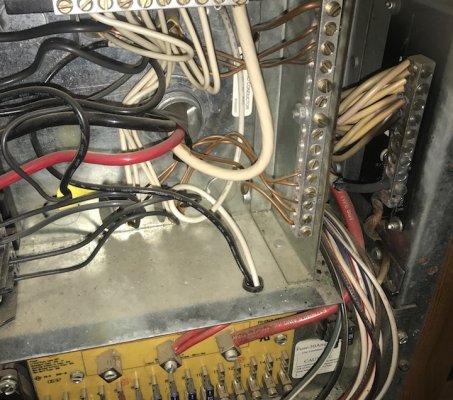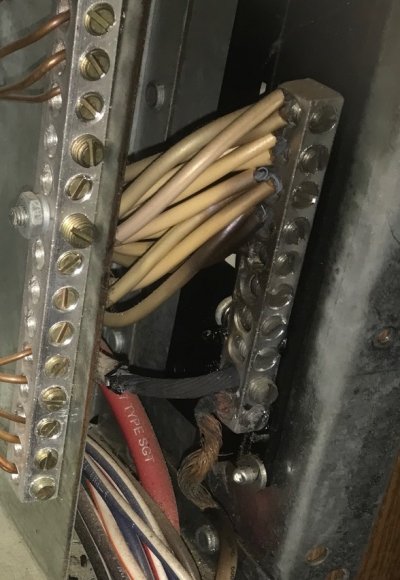The bus bar near the inverter on my RV apparently got really hot to the point it started melting the white wire insulation (shown in picture) and eventually caused connection issues on the DC negative side of things, making the DC rail drop down to around 4 volts.
I'm wondering what caused this? I borrowed this RV from a friend that had it sitting for years, and the battery was only holding about 1.2VDC charge (I found that out as a process of troubleshooting) so I swapped it for a better battery. Could that have been causing this, since the inverter would've been working so hard to charge a reeeally dead battery, or do I have other problems?
I'm looking to remove the rivets on the bus bar, put a new one in, then restrip or replace the wires with the burnt insulation, is this the right thing to do? After I removed some corrosion off one of the 12VDC negative 8 gauge wires and re-tightened it, my voltage came back up to 13.6 when plugged into the RV power service plugin where I'm staying. Sometimes the inverter cooling fan comes on though, so I wonder if there's too much of a load somewhere. I have a clamp ammeter, should I look at the current draw that way? What should it be?
I'm wondering what caused this? I borrowed this RV from a friend that had it sitting for years, and the battery was only holding about 1.2VDC charge (I found that out as a process of troubleshooting) so I swapped it for a better battery. Could that have been causing this, since the inverter would've been working so hard to charge a reeeally dead battery, or do I have other problems?
I'm looking to remove the rivets on the bus bar, put a new one in, then restrip or replace the wires with the burnt insulation, is this the right thing to do? After I removed some corrosion off one of the 12VDC negative 8 gauge wires and re-tightened it, my voltage came back up to 13.6 when plugged into the RV power service plugin where I'm staying. Sometimes the inverter cooling fan comes on though, so I wonder if there's too much of a load somewhere. I have a clamp ammeter, should I look at the current draw that way? What should it be?


